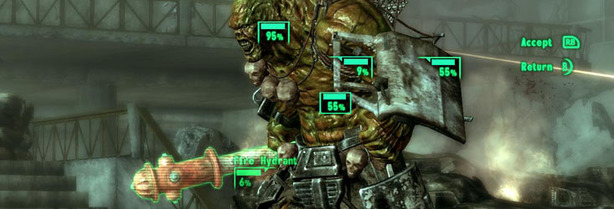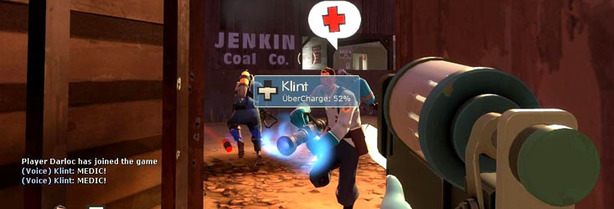
Double Trouble
How well the system works in specific games however isn’t something that’s totally consistent though, which is worth bearing in mind if there’s a certain title you’d like stereoscopic 3D to work with. While some games get full, true 3D effects, others get slightly lesser versions.Left 4 Dead and Fallout 3 were the two titles we tried where the 3DVision worked best. After a two second tweak of the depth setting the scenes really start to look three dimensional; close up items and characters not just being in the foreground but feeling truly closer than items in the distance. The on-screen guns and hands actually looked as close and real as our actual hands.
Fallout 3 is the best way to explore the 3D world by the way; when you bring your Pip-Boy 3000 up into view for the first time you can genuinely be tricked into thinking that you could press the buttons and scroll wheels. It sounds unbelievable (and it can take some getting used to in-game), but it’s true.
Not all games though get the same level of effect, which Tim and Harry say is a result of getting to the Z-buffer information during the game. Basically, if a game (usually an older one) doesn’t have a way to detect how deep into a scene a model should be then it can’t interpret that stereoscopically, though it doesn’t stop trying. The end result is usually that the whole screen looks 3D, yet too many objects appear at the same depth.
Certain parts of standard game design can cause a few problems too, namely the traditional Heads-Up Display. Most games tend to have a HUD, whether they are used to tell you how much armour you have, what units you have available or just to run a ticker of who has killed who. It works well when you’re rendering a 3D scene on a flat screen.
In stereo-vision though the reality of how a HUD works is bought home, with the whole thing leaping up to eye-level while the rest of the scene is left further away. It’s like having it all writ on a paper held just in front of your face, which can make it hard to get the information you need at-a-glance as you need to physically refocus your eyes.
For some games the HUD doesn’t pose a huge problem admittedly – Left 4 Dead is distracting at first, but you quickly get used to it and third person games are less of an issue (the Prince of Persia games work very well). Other games though can cause serious headaches.
Slipping into VATS mode in Fallout 3 is easy on a conventional screen and you just quickly cast an eye over your hit percentages and then click. With Nvidia’s 3DVision though all VATS based combat tends to end in a visit to the opticians, with players struggling to refocus back and forth between the text and the target. Reducing the depth setting helps to some degree, but also lessens the effect (and point) of stereoscopic gaming.
Team Fortress 2 also stands out as being especially hard to play in 3DVision – there’s just so much text moving around on screen between the interface, the score system and the class choices that we really had to stop playing after a few attempts.
To be completely fair to Nvidia however, these problems aren’t actually the fault of the hardware or the technology. The shutterglasses are actually doing exactly what they need to do, they just happen to be doing it a little bit too well. Nvidia has gone some way to address these problems by including a stereoscopic laser sight that you can use instead of the in-game crosshair but we found that it didn’t really help all that much.
What’s really at fault in fact is the game itself, though they too can’t really be blamed for it as they were never designed to be played in stereoscopic formats. That fact does highlight the issue though that the 3DVision won’t really benefit players beyond the visual side of things. It’s a graphical toy; ironically not essential to playing any existing games the way they were meant to be played.

MSI MPG Velox 100R Chassis Review
October 14 2021 | 15:04










Want to comment? Please log in.